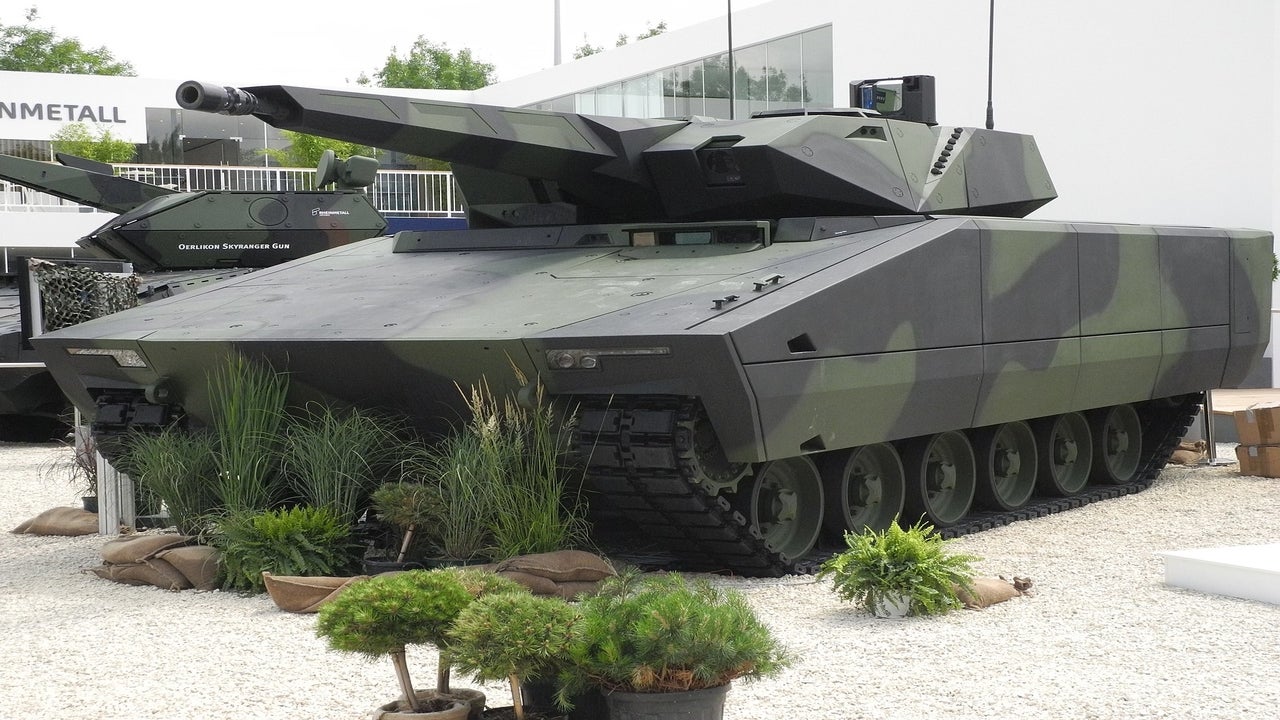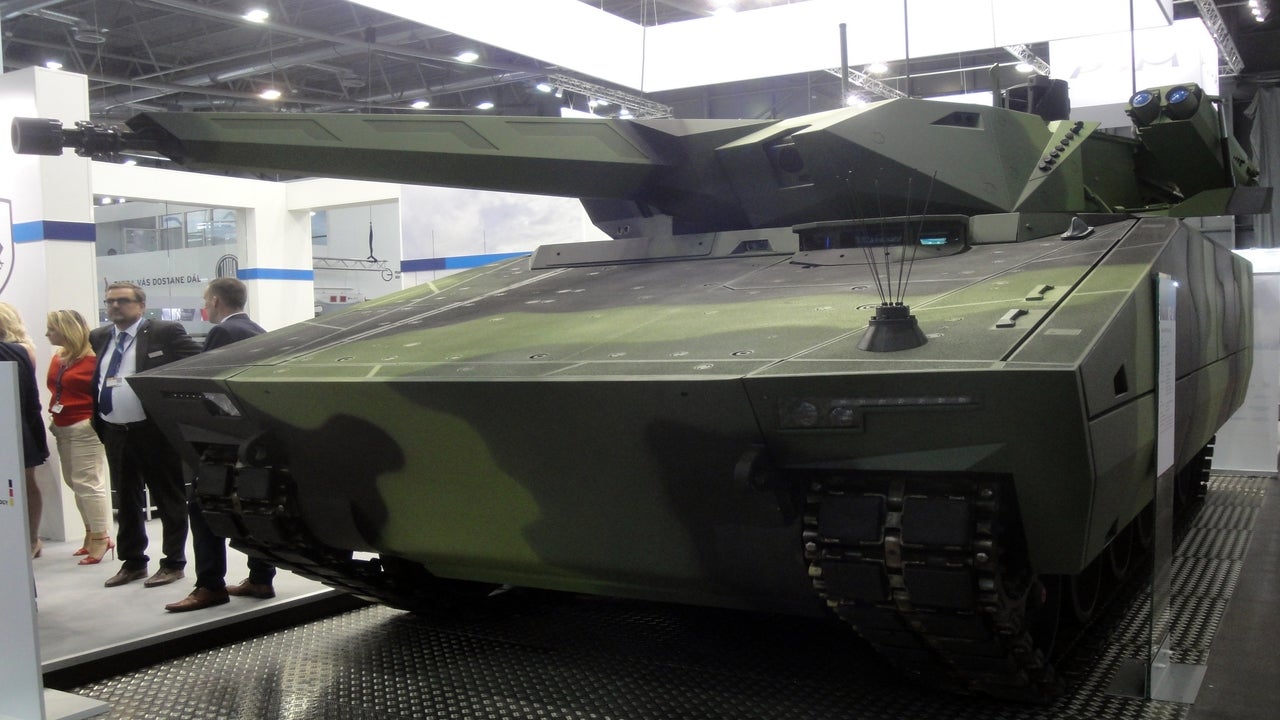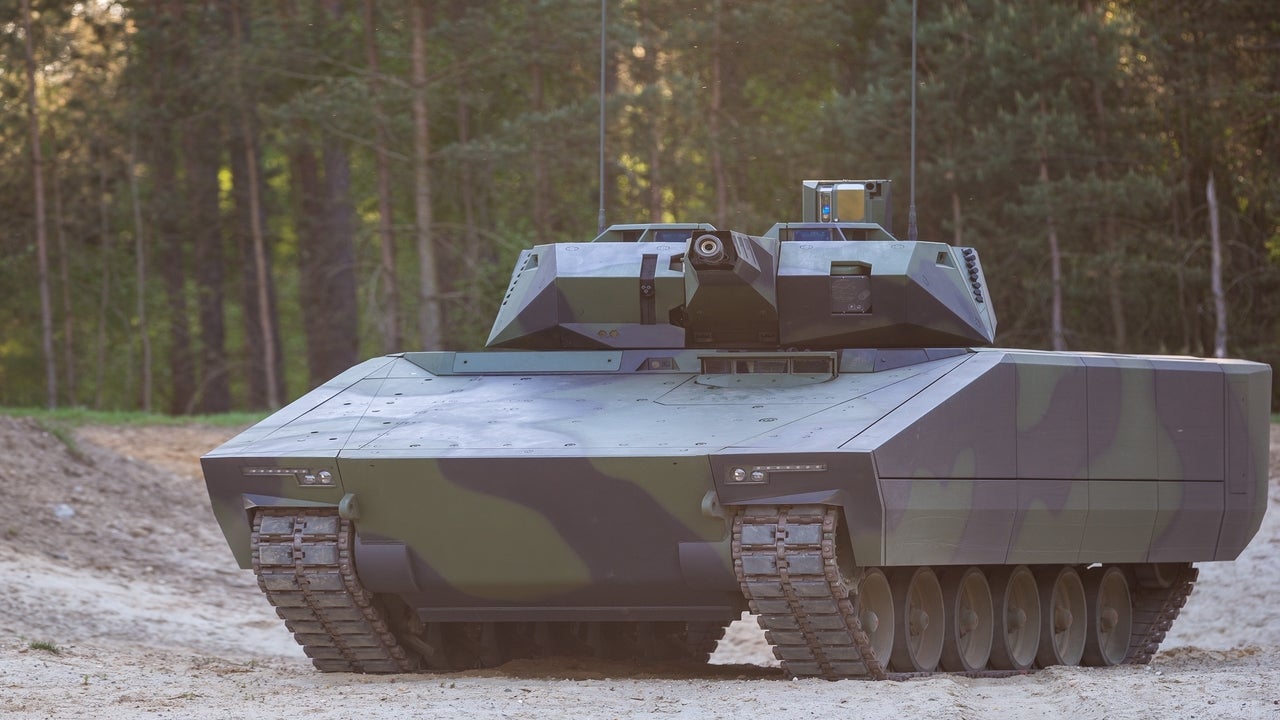The Lynx KF41 (Kettenfahrzeug 41) is a next-generation tracked infantry fighting vehicle developed by Rheinmetall Defence for global defence customers. It is the larger variant of the Lynx combat vehicle family, which also includes Lynx KF31 vehicle.
The combat vehicle is equipped with active, passive and reactive systems to offer protection against rocket-propelled grenades and anti-tank guided missiles (ATGMs).
The Lynx KF41 can be configured as infantry fighting vehicle (IFV), command and control vehicle, armoured personnel carrier (APC), ambulance, armoured reconnaissance vehicle, MEDEVAC platform, and repair and recovery vehicle.
The KF41 variant was unveiled at the Eurosatory defence exhibition in June 2018. It has been offered to Australia’s Land 400 Phase 3 programme, Czech Republic Army, and the US Army.
The Hungarian Ministry of Defence ordered 218 Lynx KF41 IFVs as part of a $2.43bn (€2bn) defence contract signed in September 2020.
American Rheinmetall Vehicles, a subsidiary of Rheinmetall Defence, partnered with Textron Systems to deliver the KF41 vehicle for the US Army’s Optionally Manned Fighting Vehicle (OMFV) programme, in October 2020.
Lynx KF41 IFV design and features
The Lynx KF41 combat vehicle is based on modular open systems architecture, which allows for configuration into various roles through the integration of new mission systems. It can be configured from one mission to another within eight hours.
The KF41 variant provides significant lifecycle cost savings and benefits as it utilises a common drive module of the Lynx base vehicle.
The vehicle can carry three crew and up to eight soldiers. It is larger than the base version and weighs approximately 44t when configured for mounted combat operations.
Armament
The Lynx KF41 infantry fighting vehicle is armed with the next generation Lance 2.0 turret, which offers enhanced survivability for critical subsystems against kinetic and fragmentation threats during close combat.
The turret is integrated with the new Wotan 35 electrically driven cannon, which is designed to fire Rheinmetall’s 35x228mm ammunition family. It is also fitted with two flexible mission pods on either side to allow for the installation of a variety of sub-systems.
The mission pod options include dual Rafael Spike LR2 anti-tank guided missiles (ATGMs), non-line of sight strike loitering munitions, an electronic warfare package or unmanned aerial vehicle.
The Main Sensor Slaved Armament (MSSA), the secondary armament for the Lynx KF41 IFV, offers 360° view for the vehicle crew.
Survivability of Lynx KF41 IFV
The infantry fighting vehicle is equipped with active defence system (ADS) with multi-hit capability for all-round protection and Rheinmetall rapid obscuring system (ROSY) for protection from unexpected attacks. It also features ballistic and mine protection capabilities.
Fire control and sensors
The stabilised electro optical sight system (Seoss) and fire control unit provide target identification for gunner and commander through a digital TV camera, Saphir® thermal imaging device and laser ranger finder. The acoustic shooter localisation systems (ASLS) aboard the vehicle can detect, localise and display hostile shooter location.
Engine and mobility
The Lynx KF41 IFV is powered by a 1,140hp Liebherr engine coupled to Renk HSWL 256 automatic six-speed transmission. It has a power-to-weight ratio of 26hp/t.
The combat vehicle uses an advanced military suspension system developed by Supashock, an Australian manufacturer of automotive components and parts. Its damper system is designed to withstand extreme force and the bump stops are engineered to reduce intense shocks.
The propulsion system provides a maximum speed of 70km/h and an operational range of 500km. The vehicle can climb slopes up to +/- 60% and side slopes up to +/- 30%. The trench crossing capability of the vehicle is 2.5m, vertical step passability is up to 1m, and the fording depth is 1.5m.






